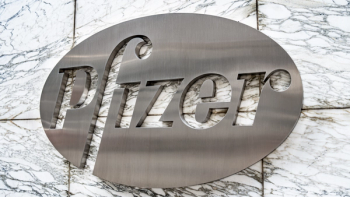Key Takeaways
- Once-weekly efsitora matches daily insulin efficacy: Phase III QWINT trials confirmed that efsitora achieved non-inferior A1C reductions compared to once-daily basal insulin in type 2 diabetes patients.
- Simplified dosing may ease insulin initiation: The fixed-dose escalation strategy used in QWINT-1 could help overcome barriers to starting insulin therapy by reducing injection frequency and complexity.
- Comparable safety with fewer hypoglycemic events: Efsitora demonstrated a similar safety profile to insulin glargine and degludec, with lower or similar rates of hypoglycemia across all three trials.
Results from the Phase III QWINT-1, QWINT-3, and QWINT-4 trials show that Eli Lilly’s investigational once-weekly insulin efsitora alfa demonstrated non-inferior A1C reduction compared to once-daily basal insulin in adults with type 2 diabetes. QWINT-1 evaluated efsitora in insulin-naïve patients, QWINT-3 evaluated those previously on basal insulin, and QWINT-4 evaluated those using both basal and mealtime insulin.1
Can a Once-Weekly Insulin Match the Effectiveness of Daily Injections?
"The novel fixed-dose regimen used in QWINT-1 for once-weekly efsitora, which consisted of only four single-dose titration options, has the potential to facilitate and simplify insulin therapy, reducing the hesitation often associated with starting insulin to treat type 2 diabetes," QWINT-1 lead trial investigator Julio Rosenstock, senior scientific advisor, Velocity Clinical Research at Medical City Dallas, clinical professor of medicine, University of Texas Southwestern Medical Center, in a press release. "A simpler, once-weekly regimen with efsitora may help people with type 2 diabetes initiate and manage insulin therapy with the goal of improving blood sugar levels. Across all QWINT trials, the results showed that once-weekly efsitora controlled glucose as effectively as the most popular once-daily basal insulins."
QWINT-1: Evaluating Efsitora in Insulin-Naïve Patients
The parallel-design, open-label, treat-to-target, randomized, controlled QWINT-1 trial compared the efficacy and safety of once-weekly efsitora using fixed-dose escalation to daily insulin glargine over 52 weeks in 795 patients.
- Patients were randomly assigned to receive either efsitora once weekly or insulin glargine once daily, administered subcutaneously (SC).
- Participants started efsitora at 100 units with fixed dose escalations every four weeks up to 400 units to reach a fasting blood glucose target of 80–130 mg/dL, switching to flexible dosing if levels remained above 130 mg/dL after 16 weeks.
- The primary endpoint of the trial was to demonstrate non-inferiority in reducing A1C at week 52 with efsitora compared to daily use of insulin glargine.
- Results showed that efsitora achieved a 1.31% A1C reduction at week 52, nearly identical to glargine’s 1.27%.
QWINT-3: Head-to-Head with Insulin Degludec
- The multicenter, randomized, parallel-design, open-label QWINT-3 trial compared the efficacy and safety of efsitora as a once-weekly basal insulin to insulin degludec for 78 weeks in 986 patients.
- Patients were randomly assigned to receive either SC efsitora once weekly or insulin degludec once daily.
- The primary endpoint of the trial was to demonstrate non-inferiority in reducing A1C at week 26 with efsitora compared to insulin degludec.
- Results showed A1C reductions of 0.86% for efsitora and 0.75% for degludec at week 26.
QWINT-4: Efsitora in Patients Using Basal and Mealtime Insulin
- The parallel-design, open-label, treat-to-target, randomized, controlled QWINT-4 trial compared the efficacy and safety of efsitora as a weekly basal insulin to insulin glargine for 26 weeks in 730 adults with type 2 diabetes previously treated with basal insulin and at least two injections per day of mealtime insulin.
- Patients were randomly assigned to receive SC efsitora once weekly or insulin glargine once daily in addition to insulin lispro.
- The primary endpoint of the trial was non-inferiority in reducing A1C at week 26 with efsitora compared to insulin glargine.
- Results showed a 1.07% A1C drop for both efsitora and glargine at week 26, with numerically lower hypoglycemia rates for efsitora.
- Notably, nearly 40% of efsitora-treated participants in QWINT-4 reached A1C targets without nocturnal hypoglycemia.
Comparable Safety with Fewer Injections
Across all three trials, efsitora demonstrated a safety profile comparable to two widely used daily basal insulins. In QWINT-1, efsitora was associated with approximately 40% fewer hypoglycemic events than insulin glargine, with event rates of 0.50 versus 0.88 per patient-year at 52 weeks. In QWINT-3, event rates were 0.84 for efsitora and 0.74 for degludec at 78 weeks. In QWINT-4, rates were 6.6 for efsitora compared to 5.9 for glargine at 26 weeks.1
"Building on Lilly's legacy of innovation in insulin therapy, once-weekly efsitora may offer a significant advancement for people with type 2 diabetes who need insulin by eliminating over 300 injections per year," said Jeff Emmick, MD, PhD, SVP, product development, Lilly, in the press release. "These results reinforce the potential for once-weekly efsitora to help reduce the overall burden of insulin therapy through a simplified treatment approach. We look forward to working with regulatory agencies to bring this innovation to patients around the world."
Reference
- Lilly's once-weekly insulin efsitora alfa demonstrated A1C reduction and a safety profile consistent with daily insulin in multiple Phase 3 trials. Lilly. June 22, 2025. Accessed June 23, 2025. https://investor.lilly.com/news-releases/news-release-details/lillys-once-weekly-insulin-efsitora-alfa-demonstrated-a1c





